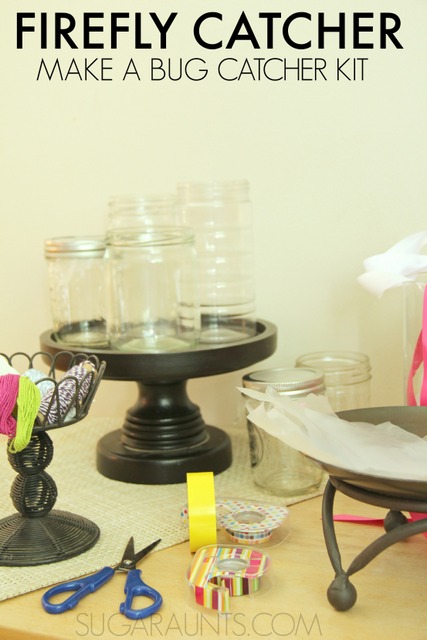
Host a firefly bug catcher creation station:


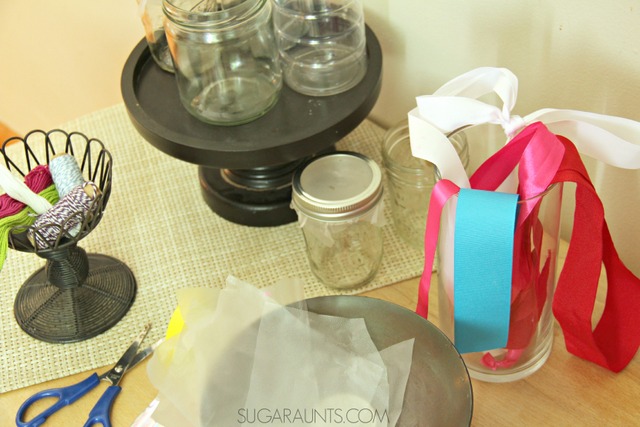





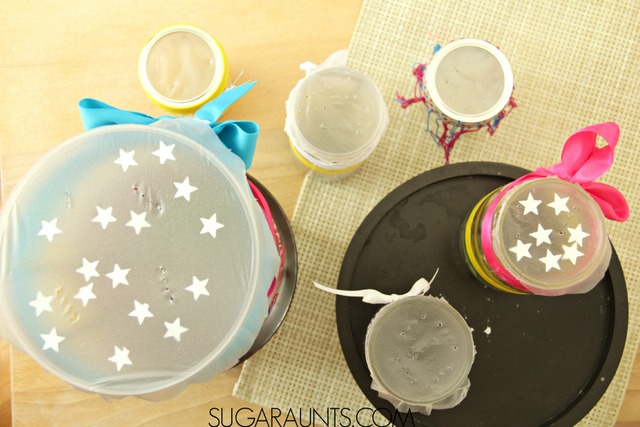





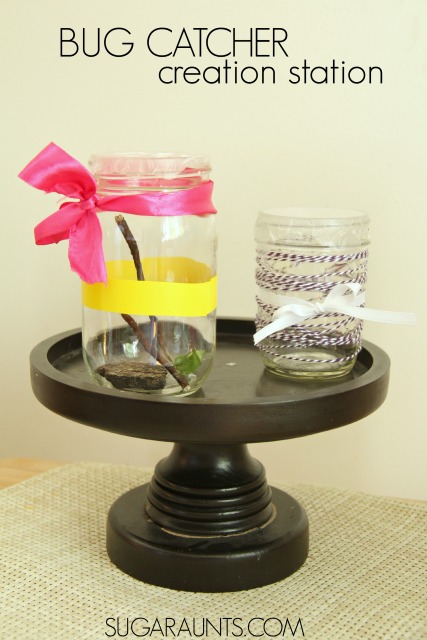


















We’re including affiliate links for our convenience. We love our marble run (this is the one we have and I love it because it’s not too difficult that my kids can’t build runs themselves, but it does include a lot of different pieces.) We pulled it out one hot day and placed it in our
water table
with water and some expanded water beads. If you’ve never played with water beads before, these are a sensory must! The small beads are perfect for sensory play and go right down the shoots of the water table. We poured, scooped, and dumped water and water beads down the shoots and ramps and watched the beads pile up at the bottom of the marble run.
This sensory play activity was not only perfect summer fun on a hot day, it was a great fine motor and eye-hand coordination activity for preschoolers.
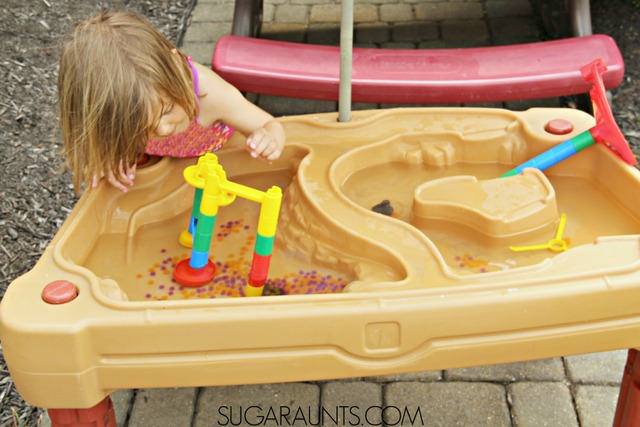

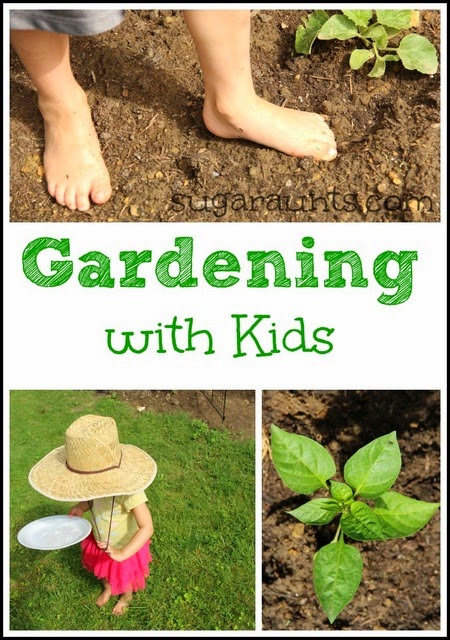

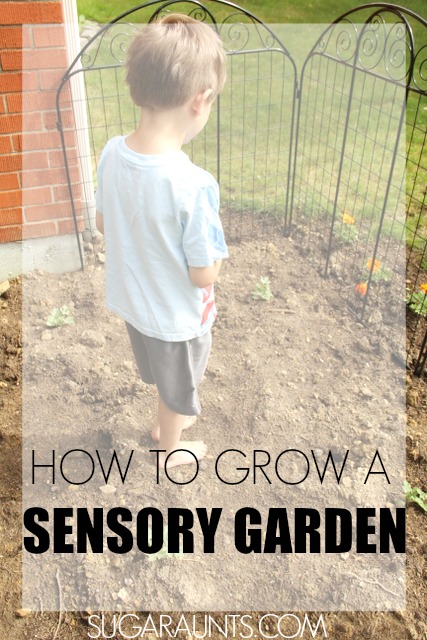



amzn_assoc_placement = “adunit0”;
amzn_assoc_search_bar = “true”;
amzn_assoc_tracking_id = “sugaun-20”;
amzn_assoc_ad_mode = “manual”;
amzn_assoc_ad_type = “smart”;
amzn_assoc_marketplace = “amazon”;
amzn_assoc_region = “US”;
amzn_assoc_title = “My Amazon Picks”;
amzn_assoc_linkid = “8b27585d685114a3ff51647e9f2bed54”;
amzn_assoc_asins = “B00026W5UK,B00005BW71,B0024J6B7Q,015204633X”;


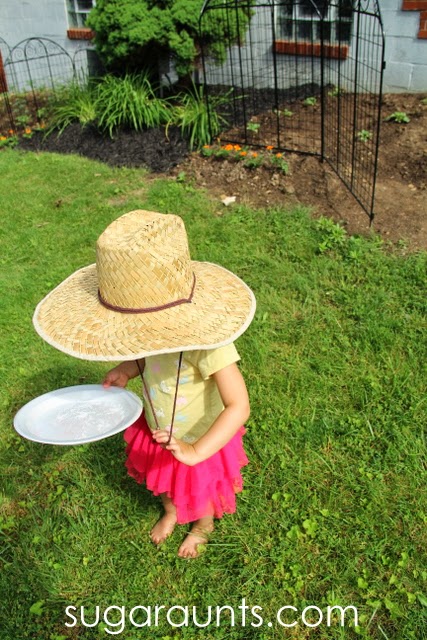

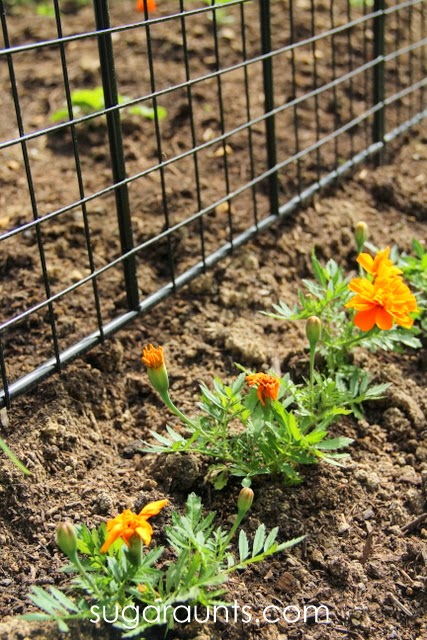

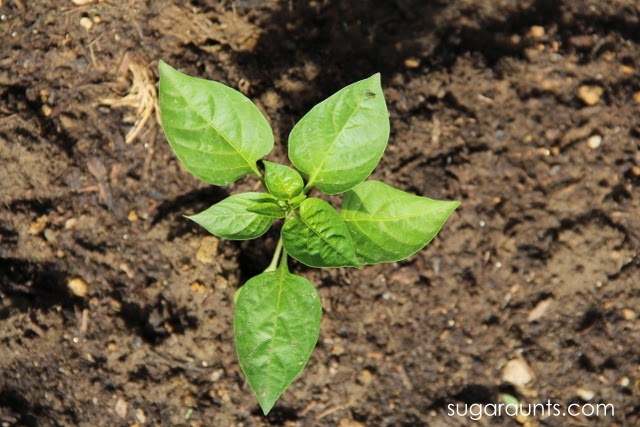

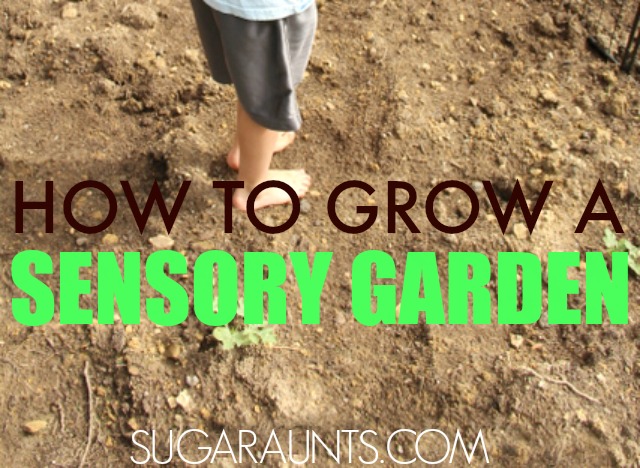

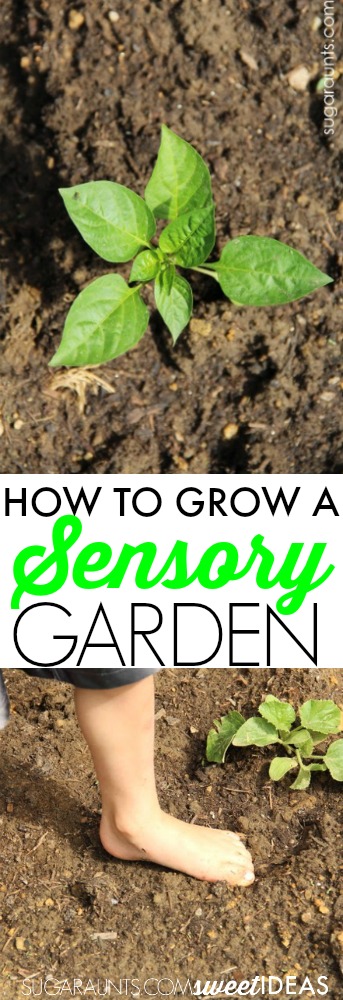

Get the things you’ll need:
amzn_assoc_placement = “adunit0”;
amzn_assoc_search_bar = “true”;
amzn_assoc_tracking_id = “sugaun-20”;
amzn_assoc_ad_mode = “manual”;
amzn_assoc_ad_type = “smart”;
amzn_assoc_marketplace = “amazon”;
amzn_assoc_region = “US”;
amzn_assoc_title = “My Amazon Picks”;
amzn_assoc_linkid = “8b27585d685114a3ff51647e9f2bed54”;
amzn_assoc_asins = “B00LMJBPCK,B00025EIZG,B004B2628M,B000X1VRNK”;
There is just something about fun snowball activities that make learning fun! These snowball games and snowball ideas can be used in winter occupational therapy activities or in hands-on learning with a snowball theme. Winter fun and play is here, so snowball games are the way to go for learning activities with movement. With winter in full swing, we’ve got snowball themed math, science, art, sight words, and more!
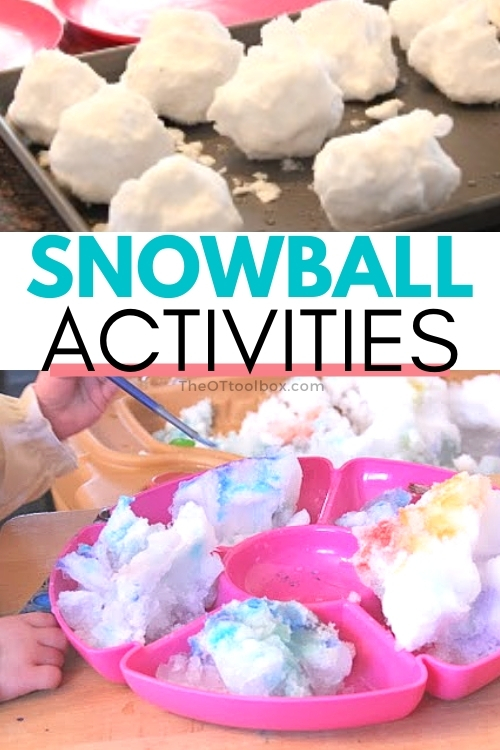

Winter learning activities can incorporate snowballs for themed, hands-on play. Whether you use paper crumbled into paper snowballs or printable snowball activities, there are so many ways to work on letter formation, handwriting, sight words, math facts, vocabulary, and much more.
Then, with snowball themed activities, there is the opportunity to add in gross motor skills, core strength, balance, coordination, motor planning, and movement.
Snowball Throwing Games– Incorporate learning with snowball throwing activities. If you have actual snow in your area, use that snow to scoop and make real snowballs. It’s a great way to strengthen the arms, work on bilateral coordination, and gain proprioceptive input.
Crumble Paper Snowballs- In this Snowball Fight Math, we wrote numbers on the outside of the crumbled snowball, then threw them at targets and into bins or buckets to incorporate coordination and motor planning.
Snowball Shotput Game– Kids can work on coordination, balance, AND add in movement-based sensory input in the form of vestibular sensory experiences with this snowball shotput activity. Work on visual processing skills such as tracking and convergence, too.
Adding an obstacle course is another gross motor idea for indoor winter learning or play. This idea from Toddler Approved is fun.
Crumble snowballs– Try crumbling paper or foam sheets to create snowballs. Inside, students can write math facts or sight words.
Scoop snowballs- Cotton balls make a nice miniature snowball. Use tongs, tweezers, or scoops to work on fine motor skills. This idea from Still Playing School can get you started.
Paint snowballs- Use colored water and some spray bottles to paint snow and improve hand strength in this painted snow activity.
Snowball target practice– Snowball Alphabet Throw is another idea.
Snowball Math Activities– Try this Comparing shapes with snowballs activity from Hands On As We Grow.
For children that need to work up to tactile tolerance, this mess-free sensory play encourages kids to touch messy materials and build up their tolerance. It’s got a snow and snowball theme, so this sensory activity would work well with this theme.
Sensory Dough– Explore sensory tolerance and tactile experiences with this frozen snow dough recipe. It’s a fun one for messy sensory play. Just add sight words, math facts, or winter cards from the Winter Fine Motor Kit…or make it all about pretend play with some arctic animal figures or Frozen characters.
Snowball Art Activities- Making crafts and art is an easy way to help children develop fine motor skills and incorporate tactile sensory experiences. This Indoor snowball painting from Fantastic Fun and Learning is a fun idea.
Shaving Cream Snow- Tactile experiences can involve more than just snow! Try this Shaving Cream Snowball Big Art from Coffee Cups and Crayons.
If taking the learning to multi-sensory experiences is interesting, try this snowball Science Experiments where we experimented with actual snow.
To take learning and motor skills further, add the Winter Fine Motor Kit to your toolbox.
Use the cards and sight words in the Winter Fine Motor Kit, to challenge kids in scissor skills, reading, sight words, sequencing, storytelling, and visual perceptual skills. The Winter Fine Motor Kit has simple and complex shapes with all kinds of Winter themed images including mittens, arctic animals, penguins, snowflakes, and more. These shapes and words can be hidden in the fake snow sensory bin for kids to hide, find, and hide again.
To up the fine motor work further, add tongs, scoops, small bowls and bins, and more.
For more ways to work on scissor skills, along with all of the fine motor skills needed for scissor use and handwriting, try the Winter Fine Motor Kit. It’s loaded with cutting activities, lacing cards, coloring, clip activities, fine motor art, and fun ways to help children develop pre-writing hand strength, dexterity, and motor skills.
Use the fine motor activities, lacing cards, toothpick art, and crafts in the Winter Fine Motor Kit. It’s a 100 page packet with all winter themes, and you’ll find winter fun there!
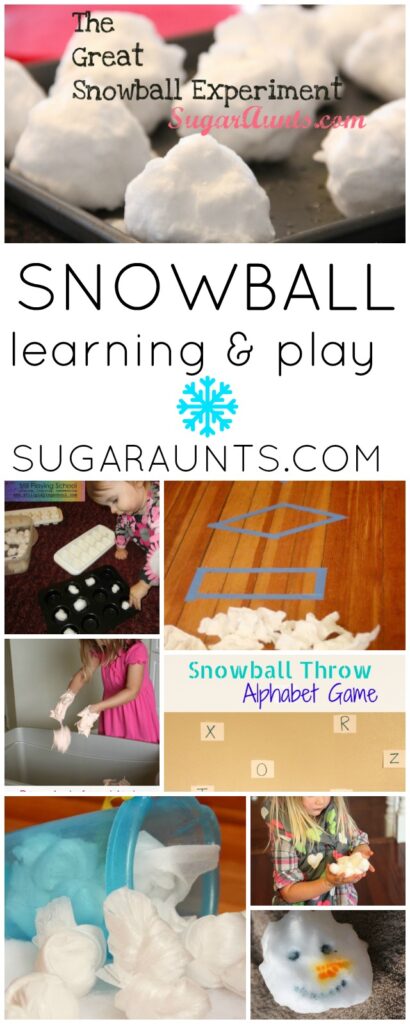



Colleen Beck, OTR/L has been an occupational therapist since 2000, working in school-based, hand therapy, outpatient peds, EI, and SNF. Colleen created The OT Toolbox to inspire therapists, teachers, and parents with easy and fun tools to help children thrive. Read her story about going from an OT making $3/hour (after paying for kids’ childcare) to a full-time OT resource creator for millions of readers. Want to collaborate? Send an email to contact@theottoolbox.com.
Snowman Picnic from Growing Book by Book
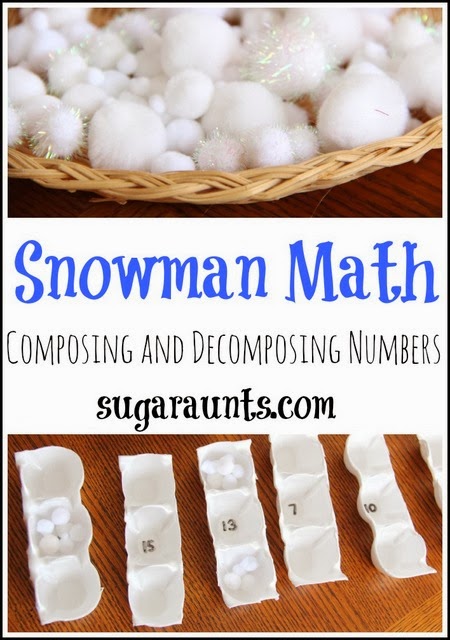



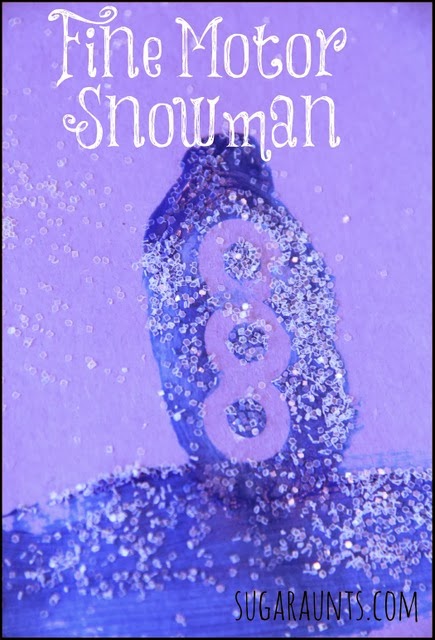

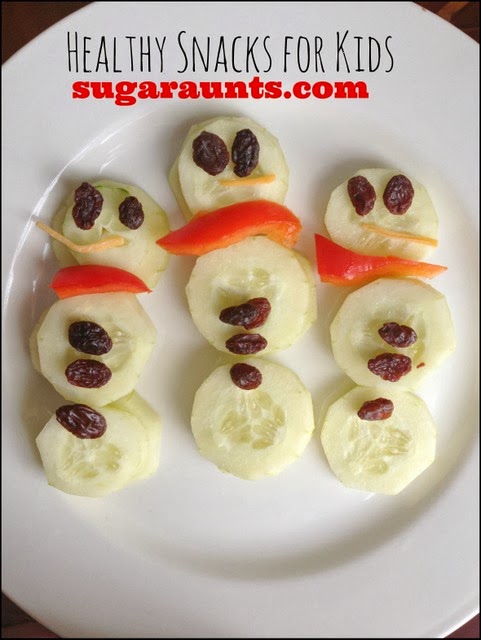







Disclosure: This post was sponsored by The Boy Scouts of America and The Motherhood. Read our full disclosure here.
Kids get a TON of screen time these days. There’s television shows, bright and crisp movies on the big screen, educational apps at home and at school, music, phone calls with screen images, and toys with screens. Getting outside to play is SO important with all of the down time that screens allow. Getting moving, getting involved, and getting active are not that easy to do for busy families with hectic schedules. Families are very busy with work and home schedules. After a full day of school, work, and commute comes homework, dinner (and all that involves), and bedtime routines. A few hours pass and it’s time for the kids to be tucked into bed for the night. This daily grind can get tiring and repetitive, especially when indoors and screen time are added into those precious home hours of the day.
What are busy families to do when all parents are stressed to balance the juggling show of home and work/school responsibilities?
We’re excited to share ideas to make a positive impact on parenting and explore all that the Boy Scouts have to offer in active, adventurous, and life-changing experiences for families.
How do busy families go against the grind of routines, comfort, and schedules and get outside? Try a few of these tips:
Boy Scout adventures can be seen at the Scouting Newsroom. Little Guy loved watching these videos. Join in on the Boy Scout fun at www.beascout.org.
What kind of adventures does your family get involved in? We’d love to chat on our Facebook page!
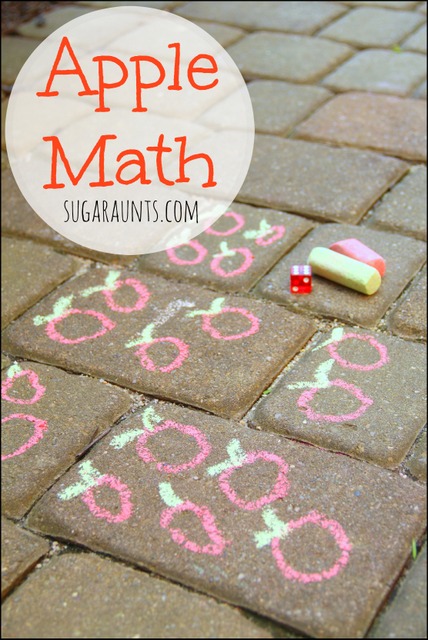

We used Sidewalk Chalk and a
dice for this activity. I took the kids outside to the sidewalk one afternoon and drew a bunch of apple shapes. We were ready to play.
Note–you could also draw any shape for this activity: pumpkins, smiley faces, geometric shapes, simple houses…any thing would work.
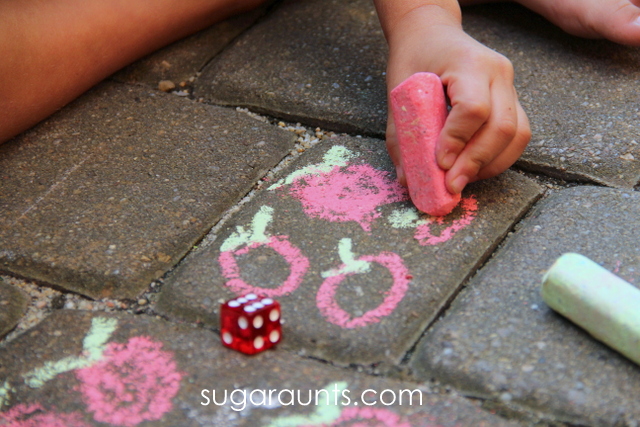

To play the game, I had the kids roll the dice. They had to count the dots on the dice, or simply look at the dots to determine how many dots there were. Big Sister did a lot of dice activities last year in Kindergarten so she was able to glance at the dice and know how many dots there were. Little Guy counted the dots. This is a great early math skill for preschool aged kids.
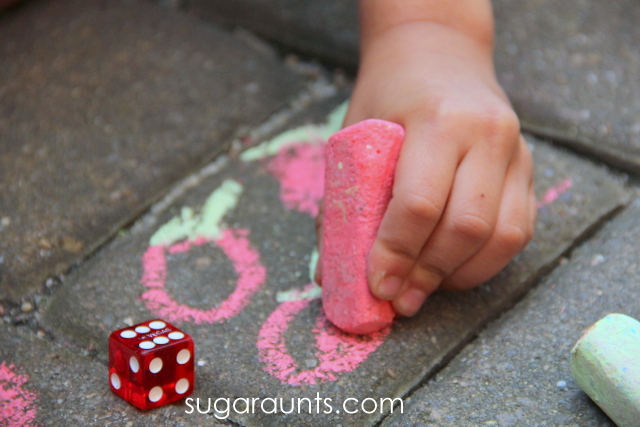

Once they counted the dots on the dice, I had them color in the same number of apples to correspond to the number of dots.
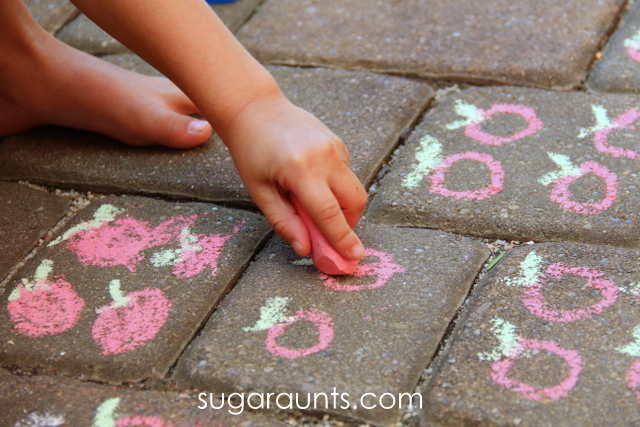

We used the squares of our sidewalk to wok on Kindergarten math concepts that Big Sister learned towards the end of her school year. Some of the squares had two apples drawn on them, and others had four or more.
This was a great opportunity to review addition.
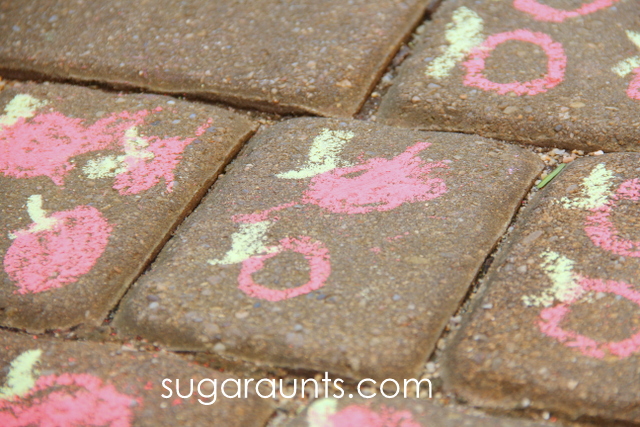

She added the apples to make the total match the number of dots on the dice.
Little Guy counted along with Big Sister to count the total number of apples filled in.
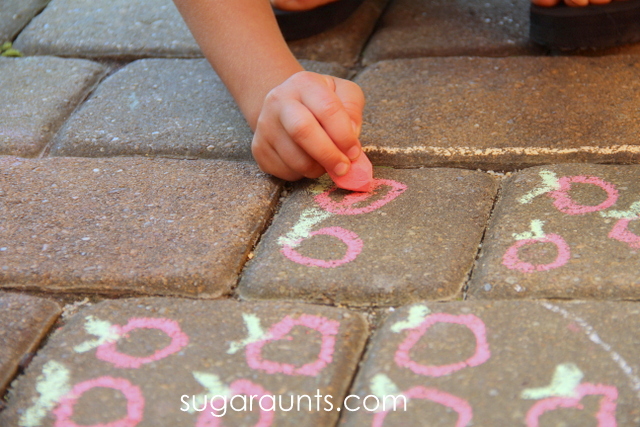

Coloring in the apples with the chalk requires use of the small muscles of the hand. The sidewalk surface is resistive and the area they colored in was small. This required precision to stay in the lines. Not to mention, coloring in all of those apples really strengthened the hands!
This was such a fun way to review old math areas for the new first grader and introduce new math concepts to the preschooler. Like this math activity? Try a few of these ideas:
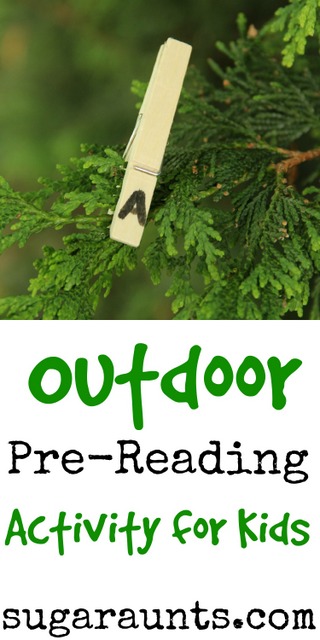

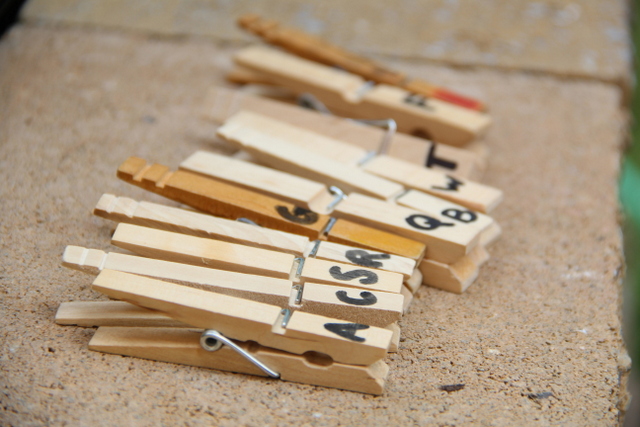

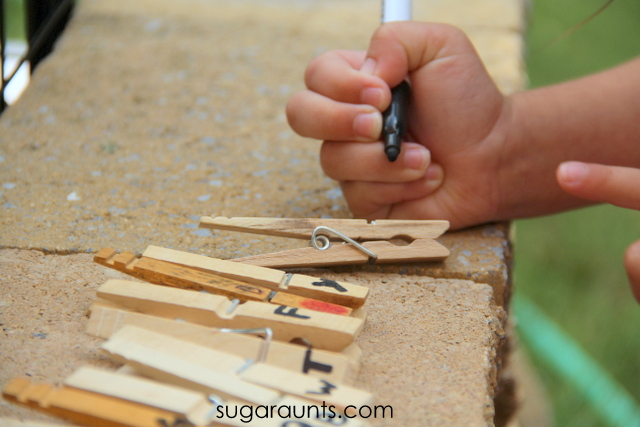

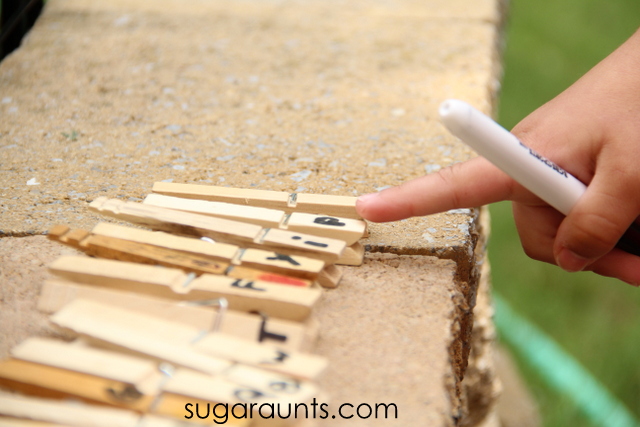

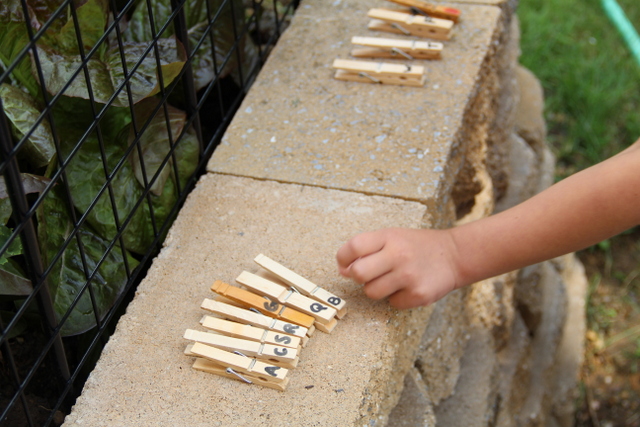

We worked together to sort out the letters on the clothes pins. We did a few different activities with the clothes pins once we had all of the letters.
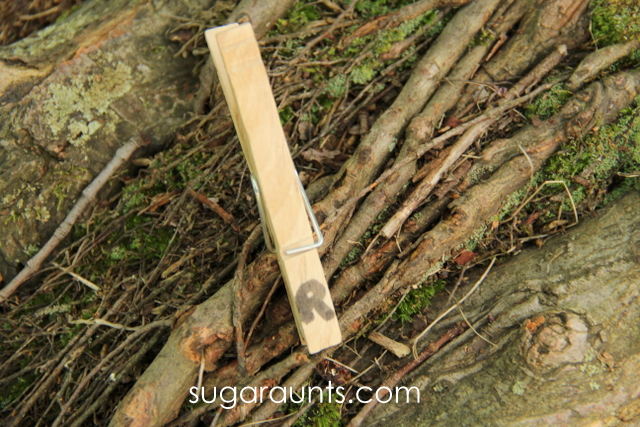

First, we went on a scavenger hunt around the yard, pinning our clothes pins to objects in nature with the corresponding letter. It was a fun pre-reading task to sound out things that we saw. Pinching the pins onto items was a fun fine motor task for both kids. We pinned R to “roots”.
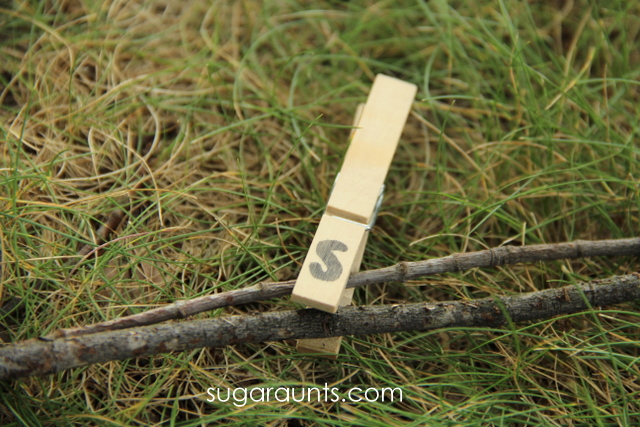

S is for “sticks”.
We did a few quizzes for Little Guy. Big Sister and I thought of an item and said I know something that starts with the letter “S”. He had to think and look to find something that started with “s” as he sounded out sssss. This is such a great pre-reading activity for pre-readers.
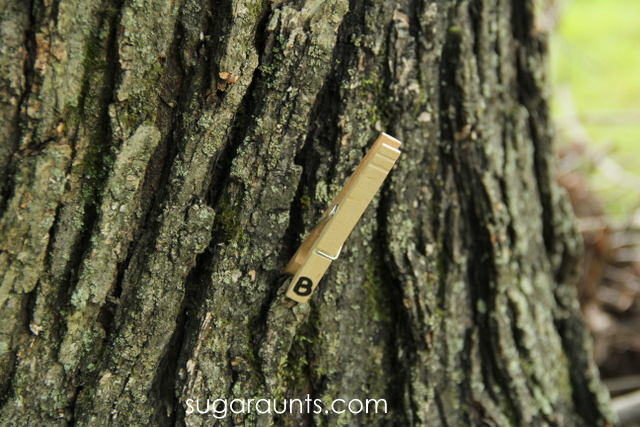

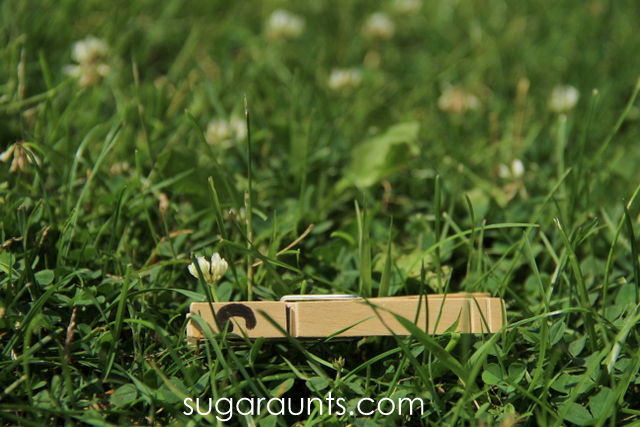

C is for clover.
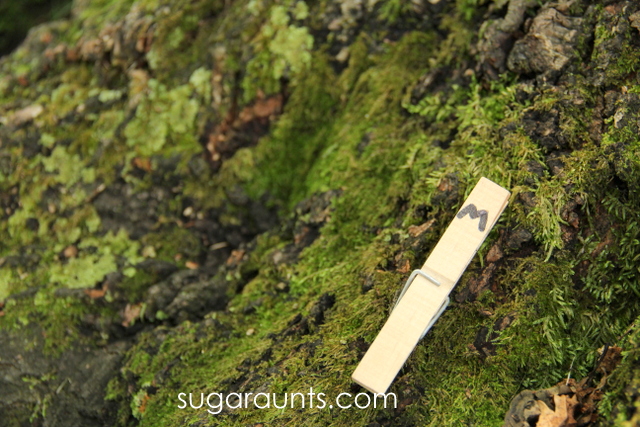

M is for moss.


A is for arborvitae. Time for a science lesson!
How many ABC items can you think of in the great outdoors? We put together a list of ABC nature items that you can find in our NEW newsletter. It’s a completely free way to be sure you see all of our posts. Each Wednesday, you’ll receive an email of our latest blog posts along with other fun stuff. Sign up for the newsletter to get the full list of ABCs of Nature items. But don’t worry, we’ll be sharing the list with you at some point in the future. Watch this space!
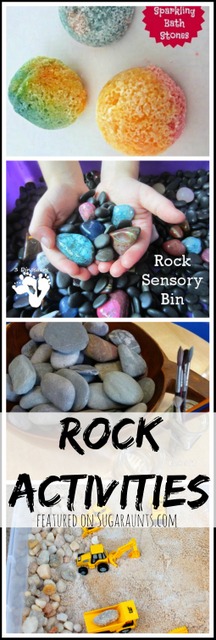

Rock Sensory Bin from 3 Dinosaurs
Sand and Rock Sensory Box from Frogs and Snails and Puppy Dog Tails



